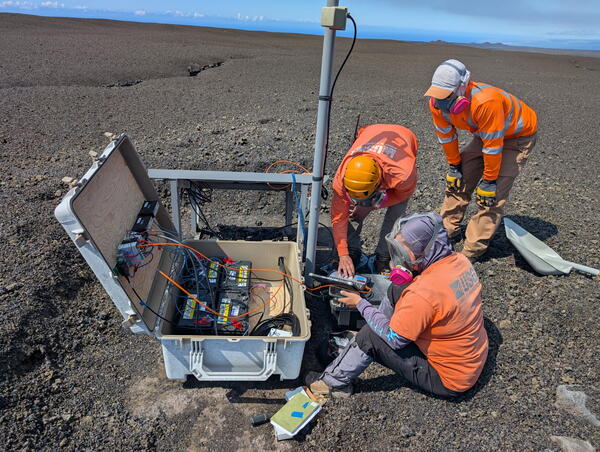July 10, 2025 — USGS field engineers service a volcano monitoring station at the summit of Kīlauea
July 10, 2025 — USGS field engineers service a volcano monitoring station at the summit of KīlaueaOn July 10, USGS field engineers visited one of the volcanic gas monitoring stations downwind of the summit of Kīlauea, within the closed area of Hawaiʻi Volcanoes National Park. This area has been blanketed with tephra material during recent eruptive episodes within Halemaʻumaʻu. USGS photo by M. Cappos.

















